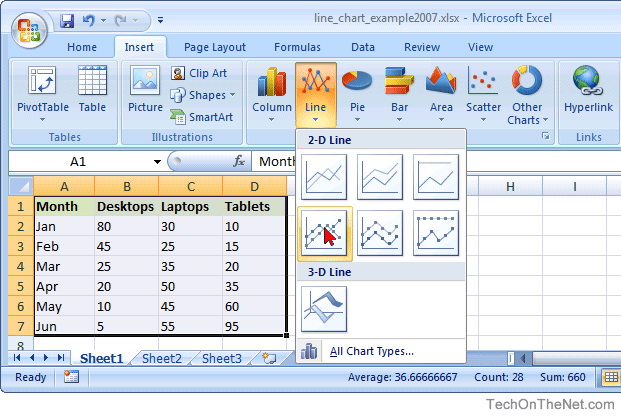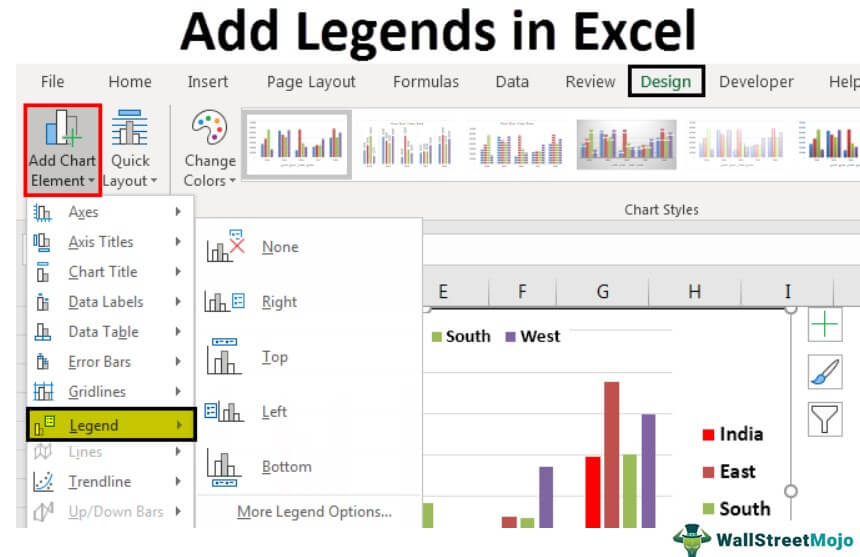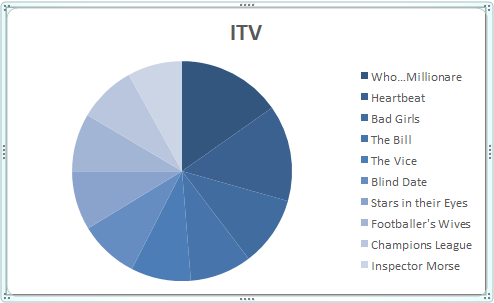

You'll notice that when you select a chart, Excel highlights the worksheet data the chart uses. You have to learn to grab hold of these floating boxes and place them where you really want them. The chart box doesn't damage your data in any way, but it can end up hiding your worksheet's numbers and text. Depending on where Excel puts it, it may temporarily obscure your data.

When you insert a chart into an existing worksheet, it becomes a floating object, hovering above your worksheet. Your options include clustering, stacking, 100% stacking, and layering (true 3-D).If your chart is an embedded chart, you can freely move and resize it with you mouse. As with column and bar charts, you can specify how cylinder, cone, and pyramid charts should deal with multiple series. Other than their different shapes, these chart types work just like regular column charts. Assuming the chart is tilted just right, you can see all these layers at once, although it's possible that some bars may become obscured, particularly if you have several series.Īlong with the familiar column and three-dimensional column charts, Excel also provides a few more exotic versions that use cylinders, cones, and pyramids instead of ordinary rectangles. That means if you have three series, you end up with three layers in your chart.
#CHARTS EXCEL 2007 TUTORIAL SERIES#
While all the other 3-D column charts simply use a 3-D effect for added pizzazz, this true 3-D column chart actually uses the third dimension by placing each new series behind the previous series. The only difference between the 3-D versions and the plain-vanilla column charts is that the 3-D charts are drawn with a three-dimensional special effect, that's either cool or distracting, depending on your perspective. That means stacked columns are designed to focus exclusively on the percentage distribution of results, not the total numbers.ģ-D Clustered Column, Stacked Column in 3-D, and 100% Stacked Column in 3-DĮxcel's got a 3-D version for each of the three basic types of column charts, including clustered, stacked, and 100 percent stacked.
#CHARTS EXCEL 2007 TUTORIAL FULL#
The difference is that a stacked column always stretches to fill the full height of the chart. The 100% stacked column is like a stacked column in that it uses a single bar for each category, and subdivides that bar to show the proportion from each series. However, the column is subdivided (and color-coded), so you can see the contribution each series makes.

To create this column, Excel adds together the values from every series for each category. In a stacked column, each category has only one column. To form a cluster, the columns are grouped together according to category. In a clustered column, each value's shown in its own separate column. The name appears when you hover over the subtype thumbnail, either in the Insert Charts list or the Insert Chart dialog box. In order to learn about a chart subtype, you need to know its name. Excel offers seven column-chart subtypes. Typically, each data series is depicted in a different color or pattern.Ĭolumn charts are often used to compare discrete items, and they can depict the differences between items in a series or items across multiple series. You can specify any number of data series, and the corresponding data points from each series can be stacked on top of each other. The value scale is displayed on the vertical axis,which is usually on the left side of the chart. The main difference between the basic column chart and these subtypes is how they deal with data tables that have multiple series.Ī column chart displays each data point as a vertical column, the height of which corresponds to the value.

Column charts actually come in several different variations (technically known as subtypes). Probably the most common chart type is column charts.


 0 kommentar(er)
0 kommentar(er)
